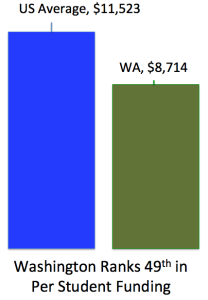THE PEOPLE HAVE SPOKEN
So as the post-election celebration, wound-licking, spin and speculation continue, one thing is clear: the candidates who campaigned on restoring state funding to our public four-year universities won. And they won big.
 In the 2013-14 legislative sessions, legislators were able to pass a small telecom revenue measure and begin to restore state funding to our public universities. This allowed them to not increase tuition for the first time in years. Then they went home and got much love, more than any of them expected, from their constituents. Suddenly, all kinds of politicians who had heretofore never shown any interest in higher education were telling everybody that the tuition freeze had been their idea.
In the 2013-14 legislative sessions, legislators were able to pass a small telecom revenue measure and begin to restore state funding to our public universities. This allowed them to not increase tuition for the first time in years. Then they went home and got much love, more than any of them expected, from their constituents. Suddenly, all kinds of politicians who had heretofore never shown any interest in higher education were telling everybody that the tuition freeze had been their idea.
So this year, pretty much everybody campaigned on restoring state funding to our public four-year universities. Some called it affordability, some called it access, some called it more STEM degrees, and some called it economic development, but flyer after flyer, from all points on the political spectrum, showed up in voters’ mailboxes this year pledging to make public higher education a priority.
And this commitment to our public universities was candidates responding to voters, not the result of some outside campaign. There was no Koch Brothers College Campaign, no California billionaire funded a higher ed independent expenditure. Instead, candidates and their consultants were genuinely tapping into the will of the people.
But, as we know all too well here at the blog, a promise is the easiest thing in the world to get a politician to make, a much harder thing to get her or him to keep. Restoring funding to our public universities will be no easy task. The last biennium’s small infusion was a start, but only a start. We should not forget that from 2008 to 2012, our state’s public universities had fully half of their state funding cut. And in total higher ed funding per student (state appropriations plus tuition) Washington still ranks 49th in the country (read it and weep here).
So legislators have a lot of work to do if they want to keep their promise to voters and nourish high quality, affordable, accessible state universities. To continue to freeze tuition, the state will have to invest at least 200 million new dollars in public four-year higher ed in the 2015-17 biennium. And that just keeps us even. Recent polls have shown that voters are very interested in seeing the state return to covering 50% of the cost of college (compared to the current 30% we have fallen to). That will require even more investment. Real investment, cash on the barrelhead, not the flim-flam of artificially low maintenance budgets, ignored inflation costs, unnamed efficiencies (Washington already has the most efficient public universities in the country), or imaginary cost-free miracles of technology. Students and their families want real college.
It’s not just sound investment and good policy, it’s election gold.